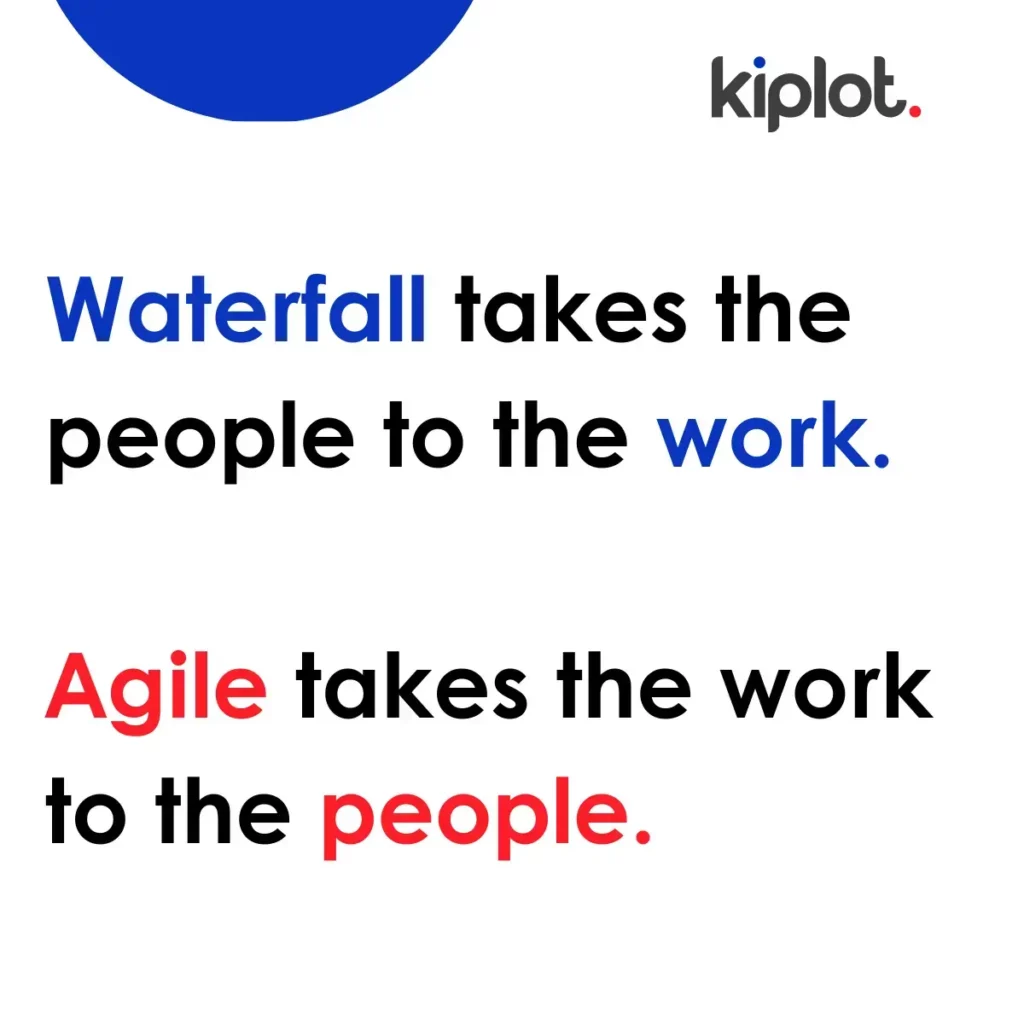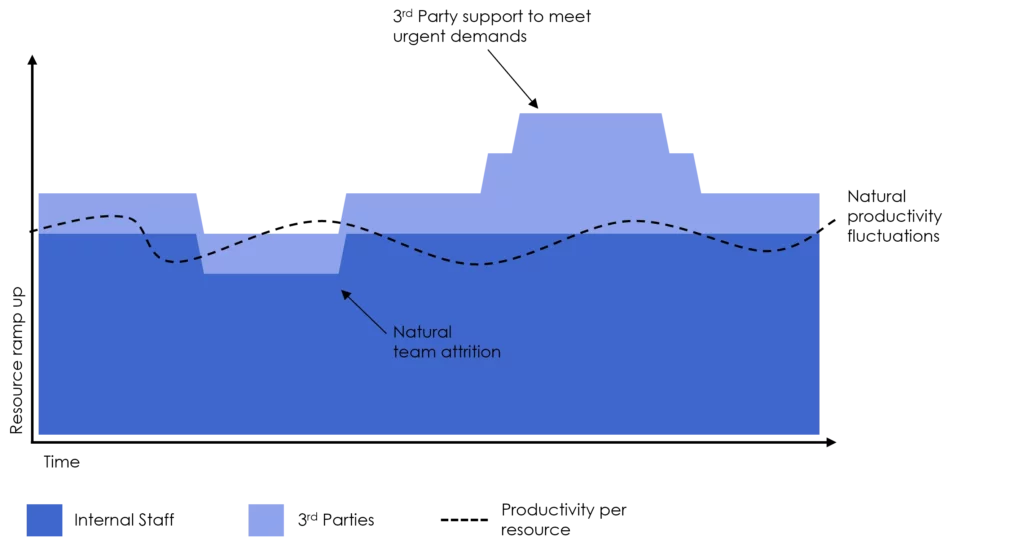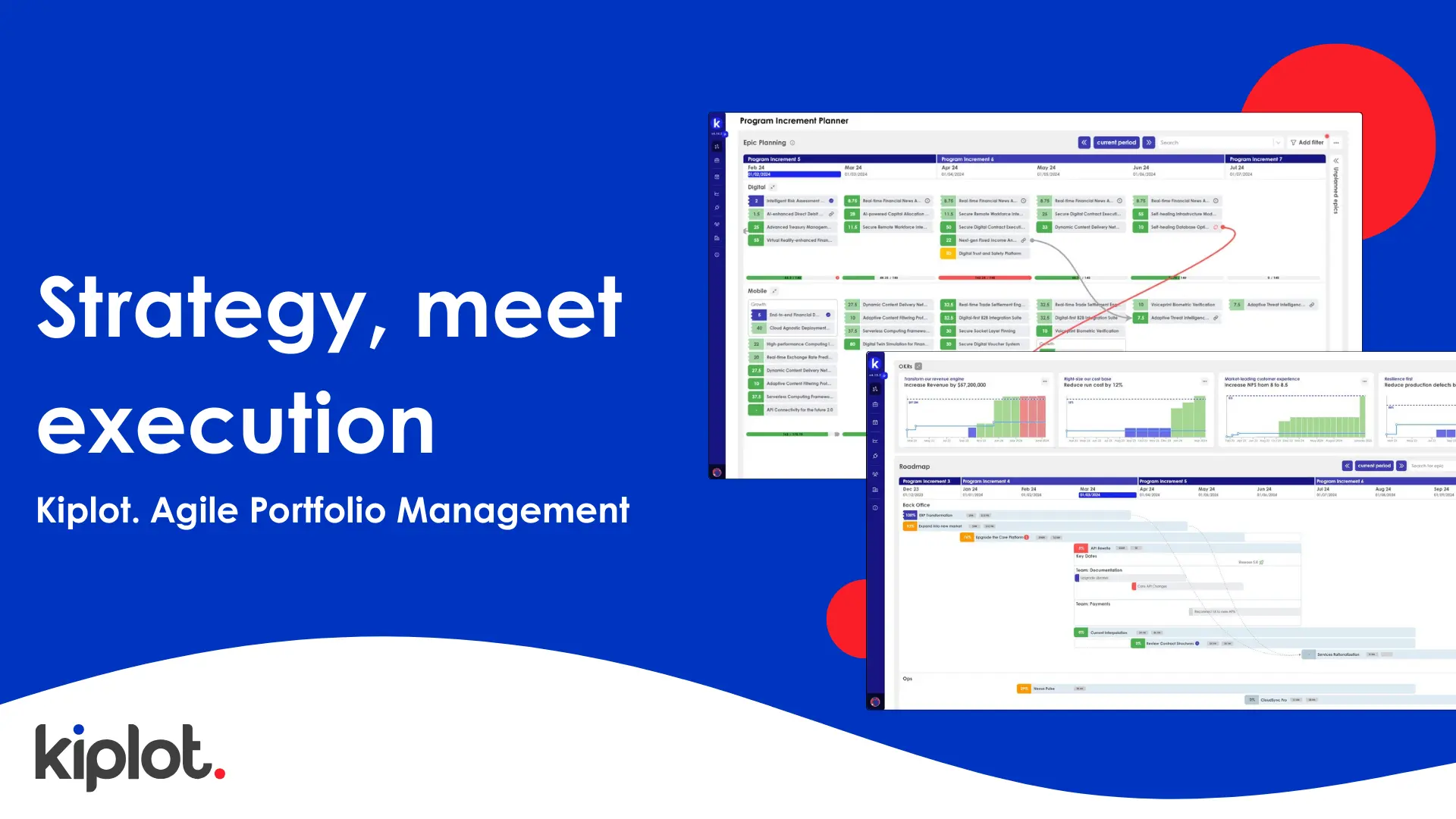Introduction
People often discuss concepts like, "With waterfall, we take the people to the work. With agile, we take the work to the people." We also hear claims that "projects are dead" and that "it’s all about durable teams." But why should we pursue this shift? What’s the significance of "PI Planning"? What is the promise of durable teams for large organizations?
In this article, we will explore the key differences between traditional resource allocation and agile capacity planning, highlighting the substantial benefits and transformative power that agile methodologies offer to organizations that successfully adopt them.
What is traditional resource allocation?
Traditional resource allocation typically works by first identifying the projects to be worked on, and then looking for the people to work on the projects. Typically, the projects to be worked on will have a defined start and end, and the resource will be allocated to the project for some portion of this time. This approach typically focuses on maximizing utilization at the individual resource level.

What is agile capacity planning?
Agile capacity planning moves away from the idea of assigning individuals to projects, and instead focuses on the idea of a durable team of like minded individuals, dedicated to working on a particular part of your organization. The team might be 20 people or 200 people, but the fundamental idea is that there is a dedicated group of people, devoted to creating value in the long run.
The objective of agile capacity planning to ensure that the team has a sufficiently deep backlog of prioritized work to pull down from to keep them busy (or fully utilized). You can think of this like a conveyor belt in a production line. Ill-defined work arrives at the beginning of the conveyor belt, and makes its way down the production line, ideally with a constant flow.
In this model, provided the team has a sufficiently deep backlog of work, there should be little concern that it will be fully utilized.
Challenges with traditional resource allocation
So what are the challenges with traditional resource allocation?
Time to ramp up
One of the biggest challenges with traditional capacity management is the loss of productivity that the “ramp-up-ramp-down” way of working causes. This method typically results in resources not operating at full capacity during the early stages of the project, or the latter stages.
During the initial part of the project, we have to go and “find” the resources, probably deal with internally conflicts with other projects for the resources we want. Then we have to write the business cases to seek approval for more resource, teams get to know each other, working patterns are established, governance is stood up and resources are onboarded, leading to significant idling.
In the latter part of the project, not everyone is required. There is a lot of “waiting around” to provide a warranty period for the newly implemented project.
The diagram below illustrates the “red zones” of traditional project showing significant wasted time.
The challenges with traditional project resourcing

Limited subject matter expertise
Another challenge with the project-centric traditional model is the knowledge ramp-up. As resources are onboarded, they must learn about the technical context, design, and objectives of the initiative. This ramp-up occurs whether a resource is joining from within the organization or from outside.
Many of us have worked on projects with “that one person” that has “been here since the beginning” and deeply understands what is going on. This individual typically spends much of their day fielding questions from the newer arrivals on the project. It is curious to think that when the project finishes, this person is likely to be assigned to a totally different project, and all of their knowledge will be lost.
No one left to measure success
The third most significant challenge with the traditional model is that when the project finishes, tehre is no one left accountable to realize the benefit associated with the project. As the last resources roll off and find new work, cobwebs form on the project, and benefit, the raison d'etre of the project, falls by the wayside.
The power of agile capacity planning
So why is agile capacity planning so different?
By structuring the organization around teams, you establish a collection of people continually focused on delivering a specific type of value, in the long run. The value stream becomes a river of expertise, beating to a predictable cadence while delivering continuous value. It acts like a magical conveyor belt that puts poorly defined ideas into one end, and extraordinary, value creating features at the other end.
The diagram below illustrates how differently an agile team’s capacity planning looks when compared to traditional resource allocation.
The opportunity with value stream centric capacity management

With agile capacity planning, we can invert the negatives associated with traditional resource allocation and turn them to positives.
No ramp up time
Long lived agile teams require no time to ramp up. When you imagine an organization where all of your projects are humming at peak productivity (often 75% of the way through the delivery of the project), it’s easy to see the power of teams over projects.
Deep subject matter expertise
Where a traditional project often suffers from insufficient subject matter expertise, agile teams are designed to be a deep well of knowledge acquired from everything that has gone before it. We can bring this to life by imagining a “Mobile team”. This is a team of people dedicated to building and maintaining the mobile app. They are the home of the expertise your organizations holds in this space.
Continuous focus on value
In traditional models, once a project concludes, no one remains to realize its benefits, leading to a loss of accountability and value. In contrast, agile teams remain dedicated to their initiatives, providing ongoing value and expertise. This approach ensures that benefits are continuously measured and optimized, as the team stays engaged and aligned with organizational goals.
Conclusion
In summary, the shift from traditional project allocation to agile capacity planning offers significant advantages for large organizations. Traditional models often struggle with ramp-up times, limited subject matter expertise, and a lack of accountability for realizing long-term benefits. Agile capacity planning addresses these issues by maintaining dedicated, durable teams focused on continuous value delivery. This approach ensures that teams remain deeply knowledgeable, highly adaptable, and consistently aligned with organizational goals. By prioritizing ongoing value over project completion, agile methodologies enable organizations to achieve greater efficiency, responsiveness, and sustained success. Embracing agile capacity planning can transform how organizations manage their resources and deliver strategic outcomes, ensuring a more dynamic and resilient operational framework.

